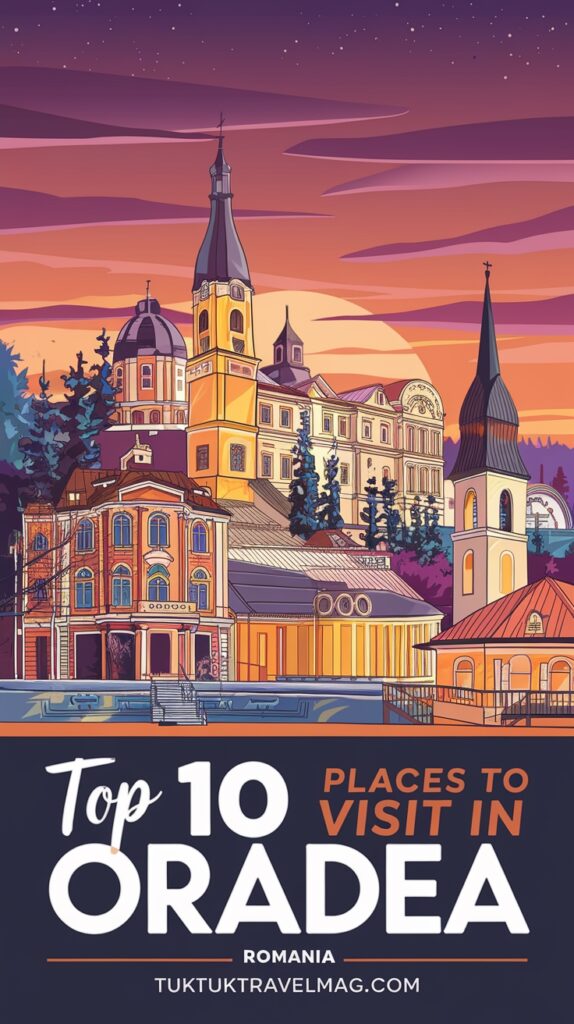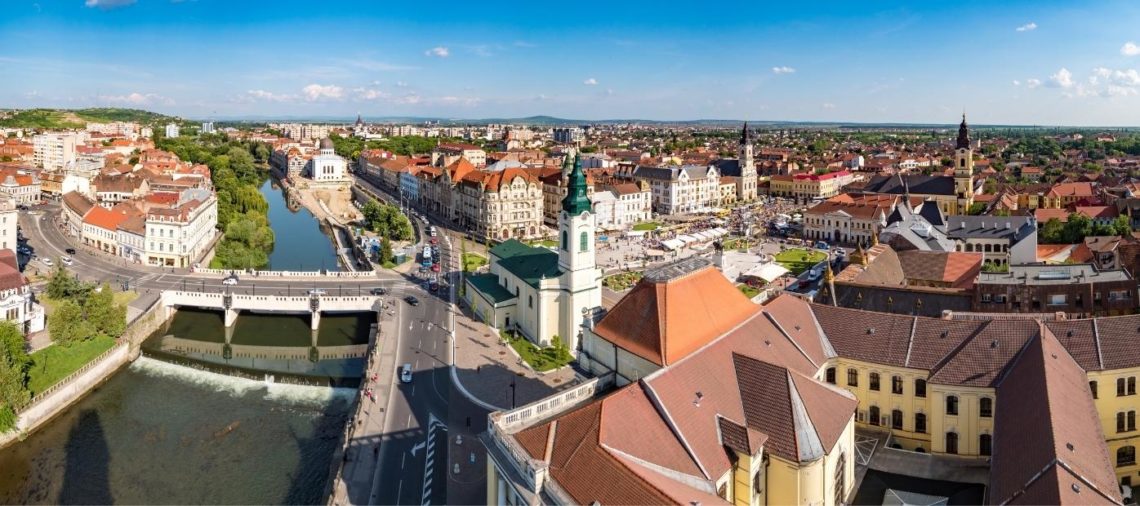If there is a city in Romania that can be said to have been reborn in recent years like a Phoenix Bird, becoming a model for what should be a true example of a Romanian tourist city, it is definitely Oradea. The city, located on the Crișul Repede river banks, has had a local administration that has set it on the right track, restoring its cultural and architectural landmarks for a rapid integration into a modern European context.
Even before it benefited from the millions of euros coming in through European channels, Oradea wasn’t an ugly city. Still, its Art Nouveau buildings needed money to shine. Its infrastructure needed enlightened minds to serve a practical purpose: a ‘liveable’ city of high standards for locals and, at the same time, a charming city for its visitors. In Oradea, there are 89 Art Nouveau buildings, 26 of which are listed as historical monuments, 25 more proposed for listing, and 38 buildings of undoubted architectural value. Let’s see what a top 10 places to visit in Oradea looks like, exactly what to do and what to see in Oradea, the Art Nouveau city, the pride of Romanian urban tourism.
- History of Oradea
- The most beautiful sights in Oradea
- Black Eagle Palace
- Unirii Square
- Medieval Fortress of Oradea
- The Baroque Complex in Oradea
- Neolog Sion Synagogue
- Mushroom Hill
- Calea Republicii street
- The Crișul Repede river bank
- Art Nouveau Museum – Darvas La Roche House
- Nymphaea Aquapark
- Best hotels in Oradea
- Best restaurants in Oradea
History of Oradea
The history of Oradea officially begins in 113 AD, when the settlement of Varadinum (the original Roman name) is first mentioned in a diploma of the Benedictine abbey of Zobor (present-day Slovakia). Still, signs of human presence on these sites have been recorded as early as the 4th century BC, followed by Dacian settlements in the 1st century BC.
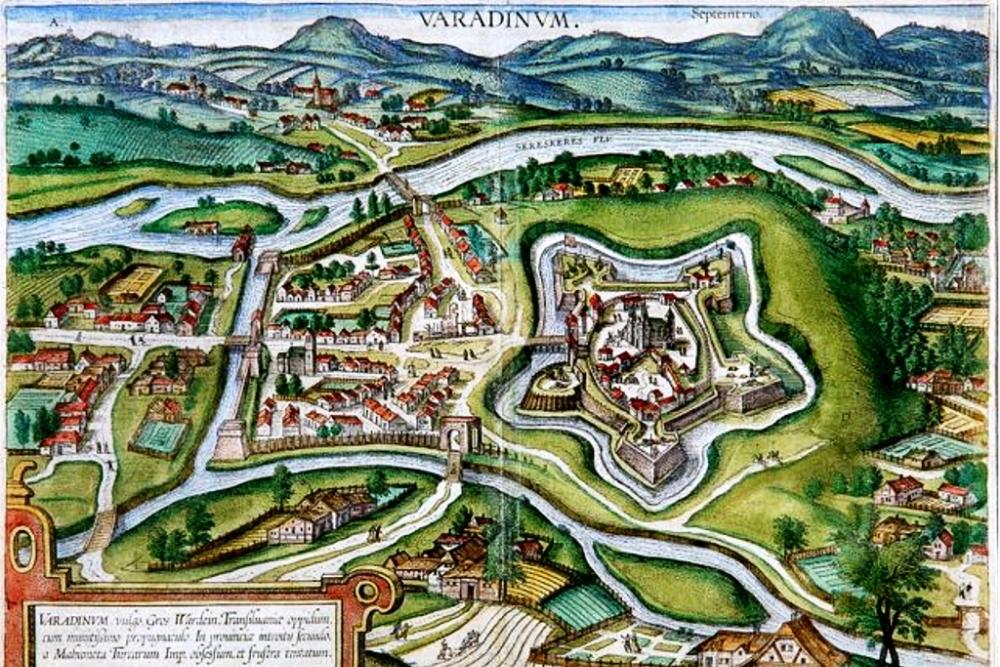
The Fortress of Oradea appears in the ‘records’ in 1241, when an Italian monk, Ruggero di Puglia, recounts in his poem ‘Carmen Miserabile’, written in Latin, its conquest following a Tatar-Mongol attack. But the city of Oradea cannot be said to have been founded at a specific date; it was more the result of the development over a more extended period of time of several settlements that developed around the city (following the Mongol invasion of 1241-1242) in the mid-19th century and united to form the present city – Orașul Nou, Velența, Subcetate, and Olosig.
The monastery built by the Hungarian king Ladislaus I the Holy and dedicated to the Virgin Mary (followed by a diocese) was the one to move things regarding the development of the area. This is why Ladislaus, sanctified in 1192, can be considered the spiritual patron saint of Oradea.
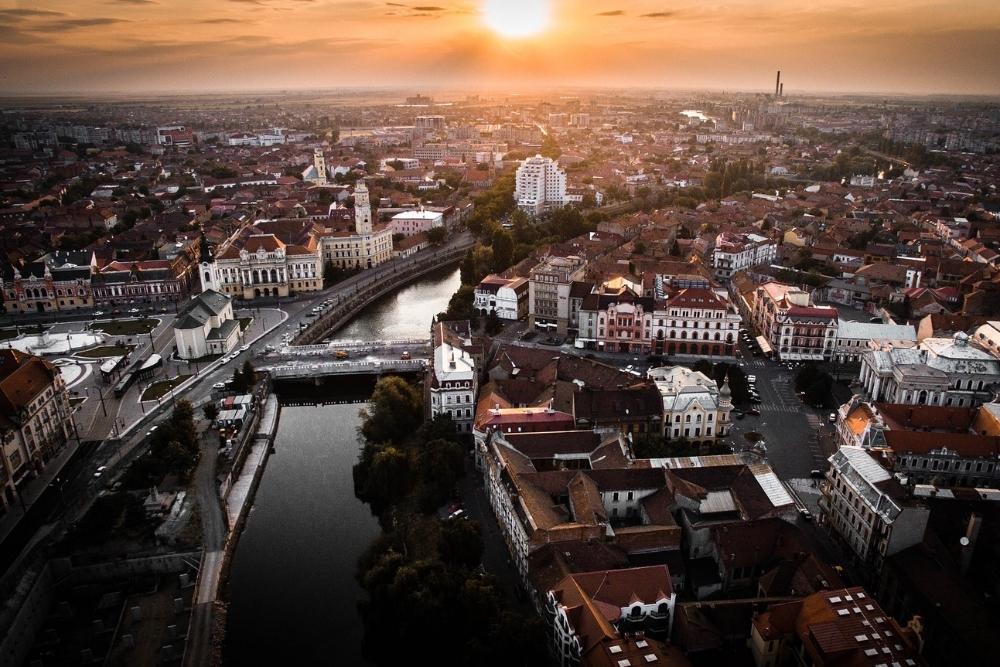
The heyday of the episcopal settlement was during the reign of King Charles Robert of Anjou (1308-1342) and his son Louis I of Hungary. They tried to replicate in Oradea the Italian refinement of the Renaissance period. Another important personality who marked the history of Oradea was the Hungarian bishop of Croatian origin, John the Brave of Sredna, who put the town on the European cultural map with the establishment of the first astronomical observatory on the Old Continent.
After having been part of the Turkish pashas of Buda (until 1692), Oradea came under Habsburg rule, which was tightened after the 1848 Revolution. With the Great Union of 1918, the city remained on Romanian territory, the interwar period defining a town with a substantial commercial and industrial impact. A cultural current was also present. Following the Vienna Dictate, Oradea returned to Hungary, along with the north-western part of Transylvania, after which, in 1944, it returned definitively as Romanian territory.
The most beautiful sights in Oradea
Situated 13 kilometers from the Hungarian border and with about 220,000 inhabitants, Oradea is now a city for all tastes. Benefiting from the presence of the River Crișul Repede, which flows through the town, Oradea delights nature lovers as well as history and, especially, architecture lovers. We have selected below, subjectively, only 10 of the most beautiful places to visit in Oradea, but there are many more.
Black Eagle Palace
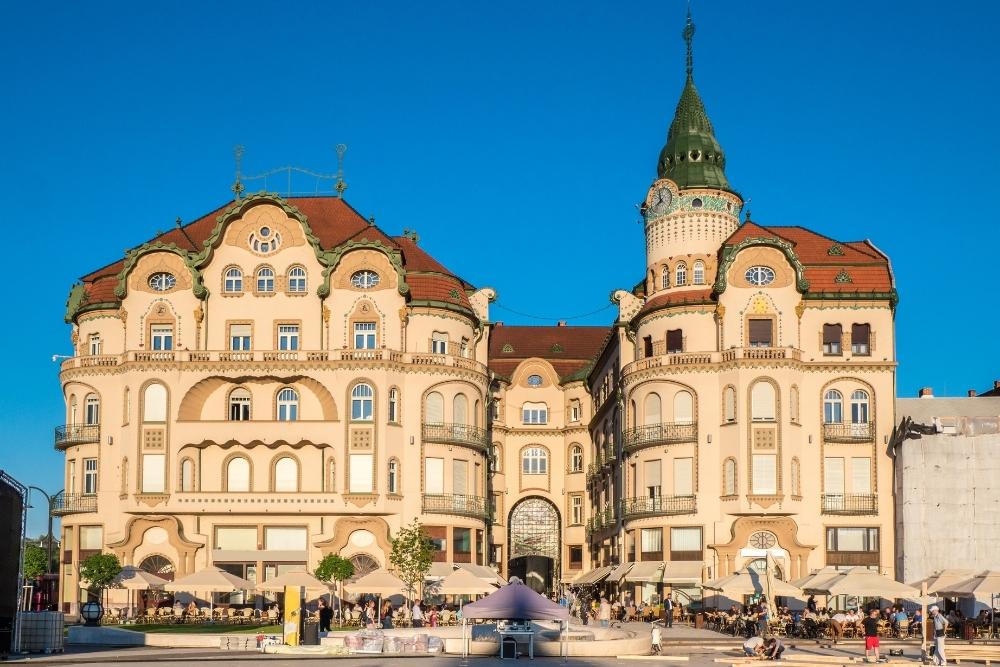
The Black Eagle Palace (Vulturul Negru) is arguably the architectural diamond of Oradea. It was built in 1907-1908, according to the plans of architects Marcell Komor and Dezső Jakab, in the secession style – a secessionist movement that appeared in Vienna in 1897, bringing together visual artists, painters, and architects. Artistic Secessionism was, at the time, the German version of the Art Nouveau movement, manifested by breaking away from patterns and uniformity.
Located in Union Square, the Black Eagle Palace was built on the site of the Green Tree Inn, a building that had existed since 1714 and, for a while, even housed the New Town Hall. Destroyed by fire in 1836, the building found a new owner only in 1905, when it was bought by two local lawyers and entrepreneurs, who decided to demolish it and build a palace on its site.
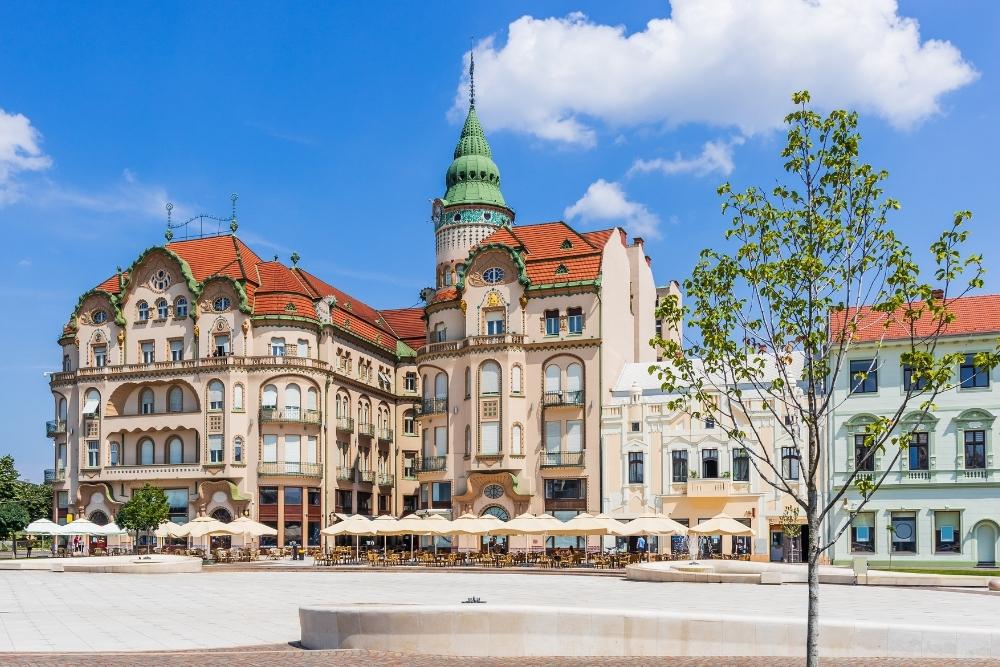
At the time of its inauguration, the Black Eagle Palace had the largest hall in Oradea and functioned as a hotel, casino, restaurant, offices and could be a cinema or concert hall.
The Palace building is four stories high and consists of two unequal bodies in a Y-shape, characteristic of the Secessionist style, which some liken to the shape of an eagle’s beak. It has a glass-covered interior passage and spectacular and unusual ornaments with floral and zoomorphic motifs. The stained glass window with the black eagle, from which the building takes its name, dates from 1909 and is made by the local Neumann K. workshop.
The Black Eagle Palace now houses a hotel, restaurant, cafes, clubs, and offices.
Address: 1 Independence Street
Unirii Square
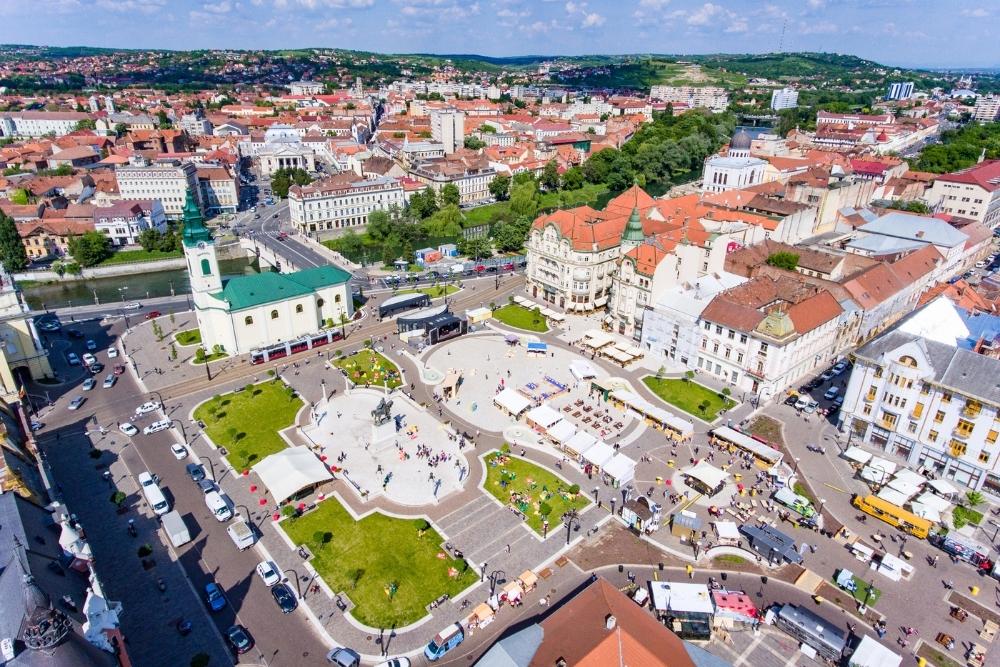
Unirii Square (Union Square) is practically the center of Oradea, renovated in 2015. “Kilometer Zero” from a cultural and historical point of view, the square is surrounded by representative buildings – the Town Hall, the Moon Church, the Black Eagle Palace, the Greek-Catholic Bishop’s Palace, the Moskovits Adolf and Sons Palace, St. Ladislaus Church, the Greek-Catholic Church of St. Hierarch Nicholas – as well as restaurants and cafés.
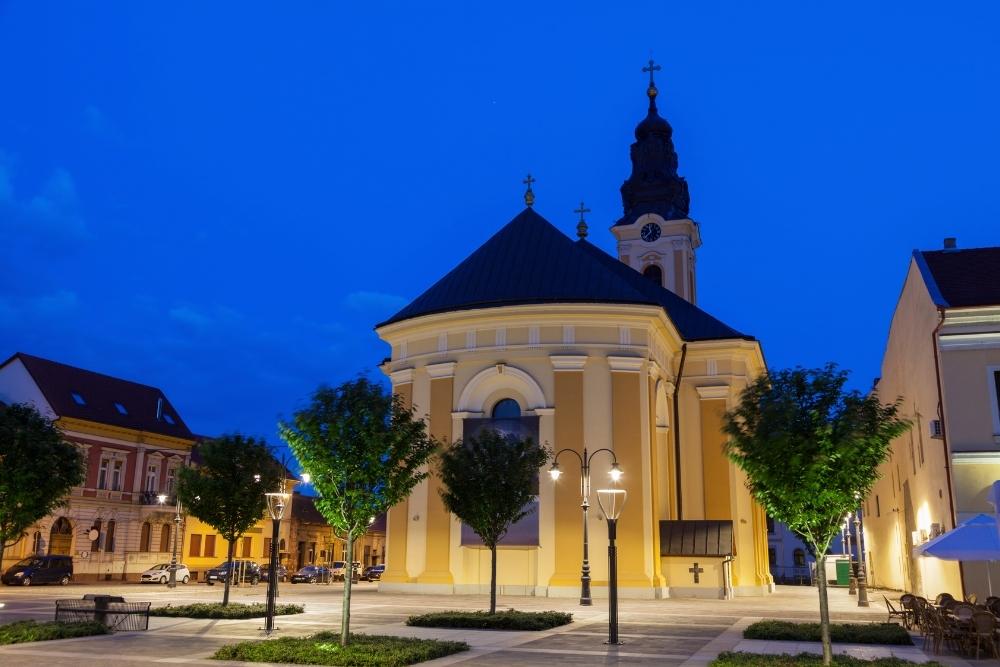
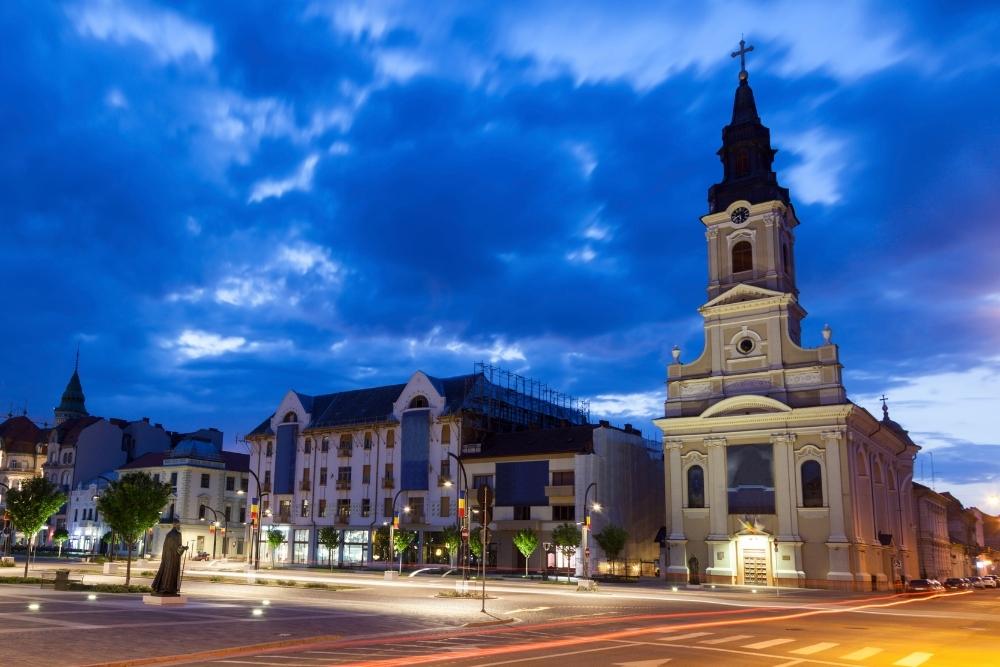
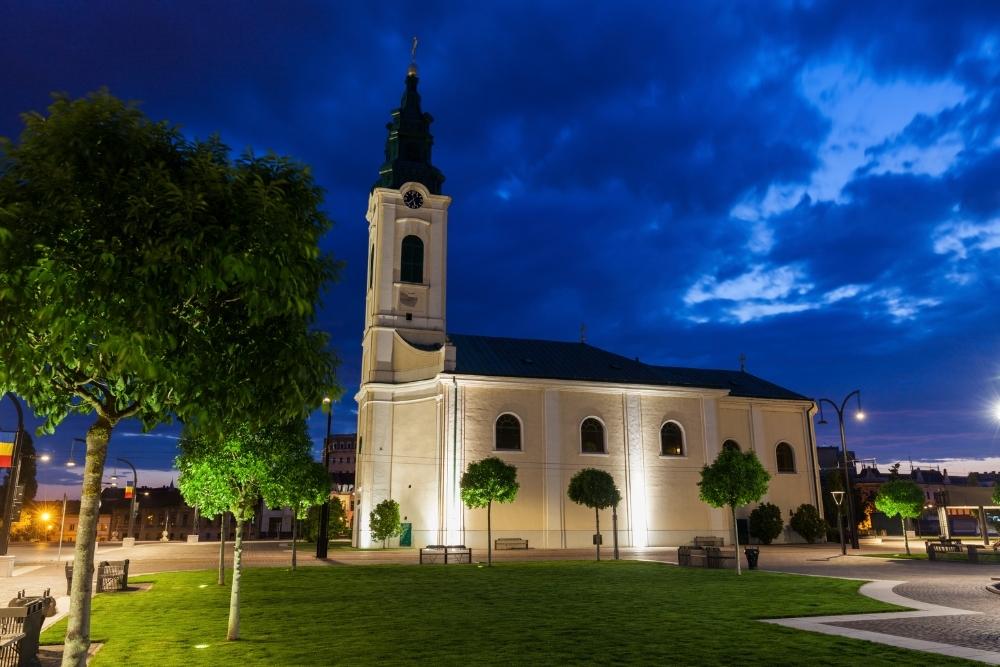
In the center of the square stands the statue of Michael the Brave, which replaces the monumental statue of King Ferdinand I that was installed in 1924.
The history of Unirii Square begins with the center of the New Town (between the Crișul Repede and the Peța stream), formed between 1714 and 1740, which boasted the Little Square. The fire of 1836 was a new beginning for this area where only three churches remained, important landmarks for what was to be built later: the Church of the Moon, the Greek-Catholic Cathedral of St. Hierarch Nicholas, and the Roman-Catholic Church of St. Ladislaus (the latter being the oldest – 1720-1733). The Kováts House was to be added to them, and then, in the second half of the 19th century, the town hall decided to turn the square into a park to relax the town’s citizens.
In 1870 the town was granted municipal status, and street lighting with alcohol was introduced, in 1872, the rules for motor traffic were published, in 1880, the magazine Familia appeared, in 1892, the first pavements were built.
The beginning of the 20th century was marked by the construction of the other representative buildings on Unirii Square: the Town Hall Palace (1901-1903), the Greek-Catholic Bishop’s Palace (1903-1905), the Moskovits Adolf and Sons Palace (1904 -1905), the Black Eagle Palace (1907-1908). Unification Square was given its present name in the interwar period, having previously been called St Ladislaus Square.
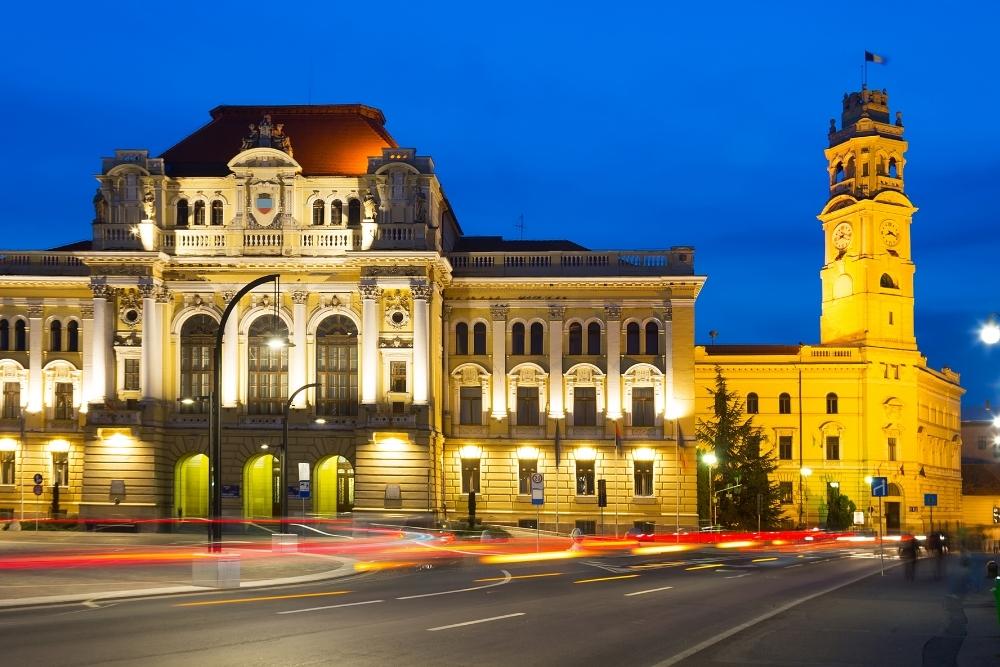
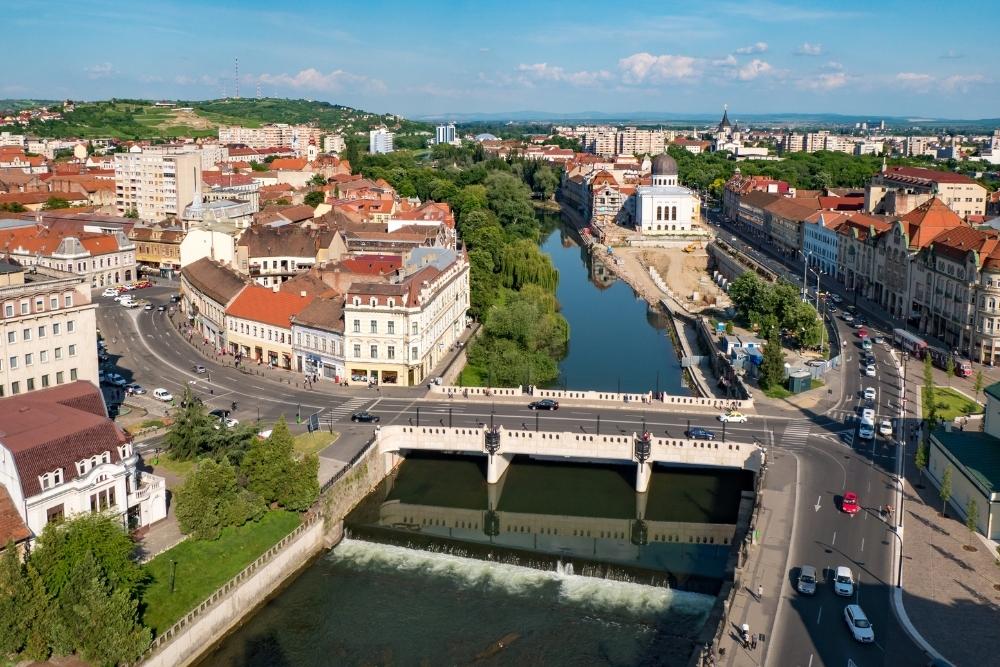
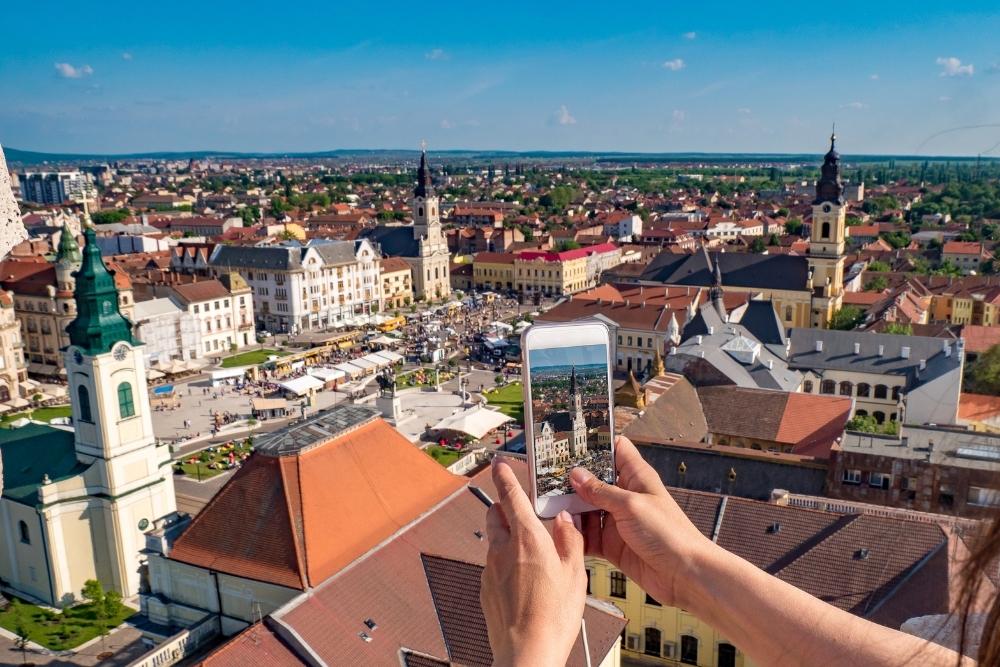
One of the main attractions of Unirii Square in Oradea is undoubtedly the City Hall Tower. Part of the administrative building, the neoclassical tower has four floors and a height of 50 meters. Tourists can climb it to take panoramic photos and admire the clock mechanism on level 1 or the giant hammers on level 3.
Medieval Fortress of Oradea
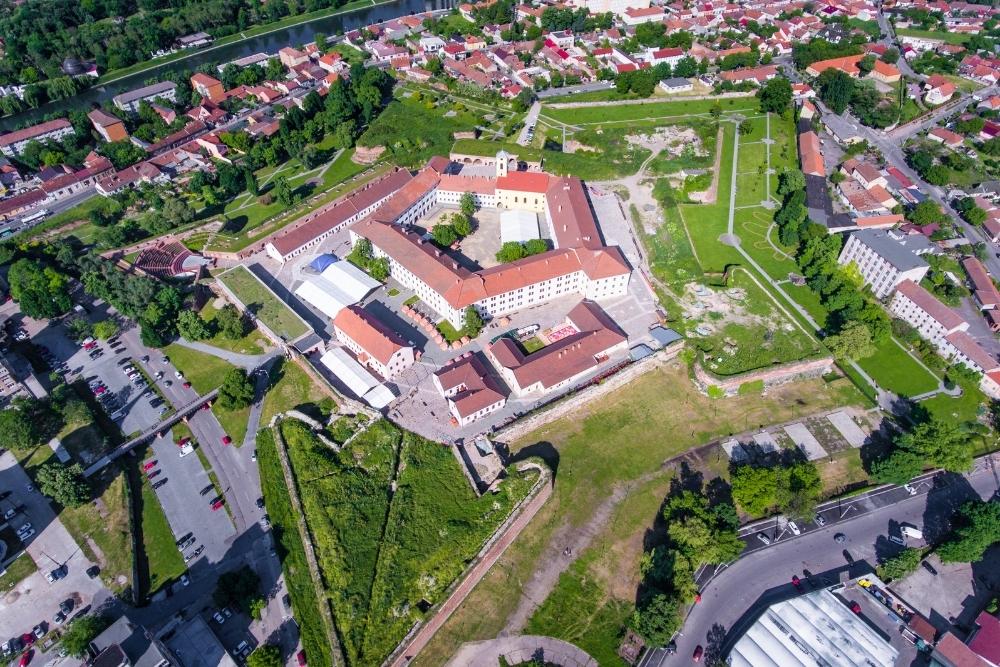
The Fortress of Oradea was initially built in the 11th century (between the Crișul Repede and the Peța stream) by King Ladislau, who originally made a fortified monastery dedicated to the Virgin Mary. Ladislaus also established the Roman Catholic diocese within the Fortress. In the 11th-13th centuries, the Fortress became a fortification with an earthen wave, stone walls, and wooden towers. In the 14th century, after having been badly damaged (by the Mongol invasion and other attacks), a new fortress appeared.
1619 was the year that particularly marked the history of the Fortress of Oradea because Prince Gabriel Bethlen began the construction of a palace with walls parallel to those of the Fortress. It included a tower at each of the five corners. Completed in 1650, the Princely Palace was considered one of outstanding beauty, striking with its late Renaissance style. In the 16th and 17th centuries, the Fortress of Oradea became an Italian bastion-type fortification (wedge-shaped bastions), the only one of its kind in Eastern Europe.
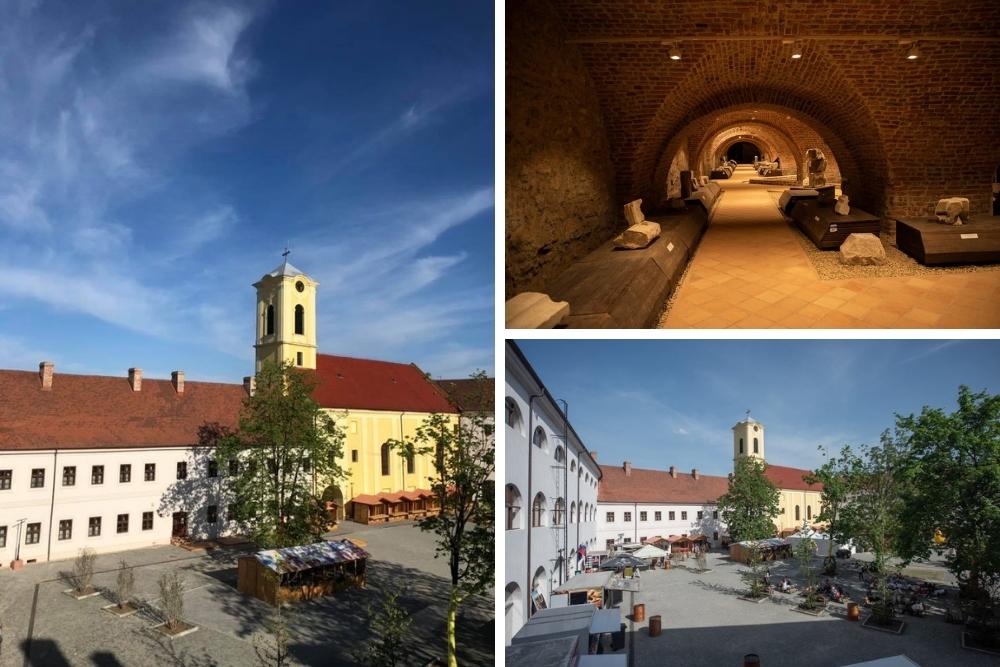
Conquered only three times in the course of history, the Fortress of Oradea benefited from the help of the moat, 4 meters deep and 50 meters wide, which was supplied with water from both the Crișul Repede and the Peța, the stream having thermal water which meant that in winter the moat never froze. Today, the fortress moat has been transformed into a leisure park.
After a long restoration process, the Oradea Fortress was opened to the public in 2015, making it the focal point of cultural activities in Oradea. Festivals, film screenings, and events are organized inside the Fortress, and tourists enjoy the sights inside, from museums and craft workshops to restaurants serving delicious local dishes.
Address: 41 Emanuil Gojdu Square
The Baroque Complex in Oradea
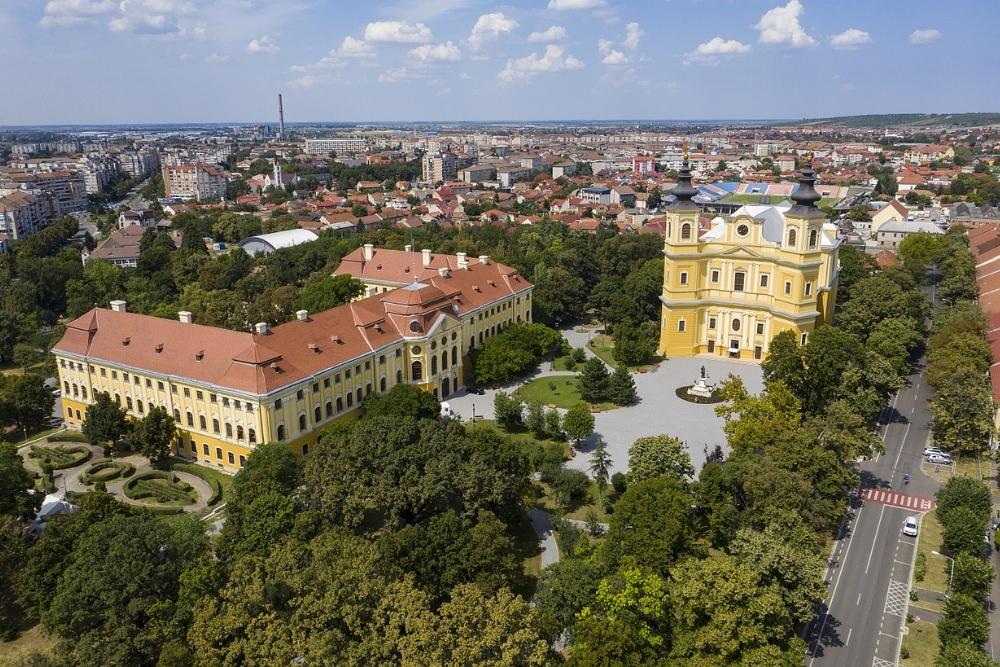
The most prominent architectural complex in Romania – the Baroque Complex of Oradea, built in the mid-18th century – comprises a cathedral, a palace, a “tunnel” of dwellings, and a garden. The palace was built in 1777, the Roman-Catholic Cathedral in 1779, the Canons’ Hall in 1877 (begun in 1750), and the Roman-Catholic Episcopal Palace Garden in 1757.
The Canons’ Row represents ten attached houses of the canons – a college of priests serving the diocese – a complex built in the Italian Baroque style over more than 100 years. The outer corridor is supported by a row of pillars forming the impression of a tunnel.
The Roman Catholic Bishop’s Palace, which houses the seat of the Roman-Catholic Bishopric, was designed by a Viennese architect – Franz Hillebrandt – and built in late Baroque style, the idea being to resemble, on a smaller scale, the Belvedere Palace in the Austrian capital. The palace has 365 windows, one for each day of the year, and once hosted Princess Sissi of Austria herself.
The Roman Catholic Cathedral is the work of Italian architect Giovanni Battista Ricca, in the baroque style typical of northern Italy, but with Austrian baroque ornamentation added by the Viennese Franz Anton Hillebrandt, who completed construction after Ricca’s death. The cathedral is one of Europe’s most beautiful basilicas, has 11 altars, a three-century-old organ dedicated to the Virgin Mary, and houses the relics of St Ladislaus.
The Garden of the Bishopric’s Palace was laid out in English style on the initiative of Bishop Pál Forgách, and has recently been renovated to its former appearance in the last century, with several hundred trees and shrubs, rose bushes, and other plants.
Address: 13 Șirul Canonicilor Street
Neolog Sion Synagogue
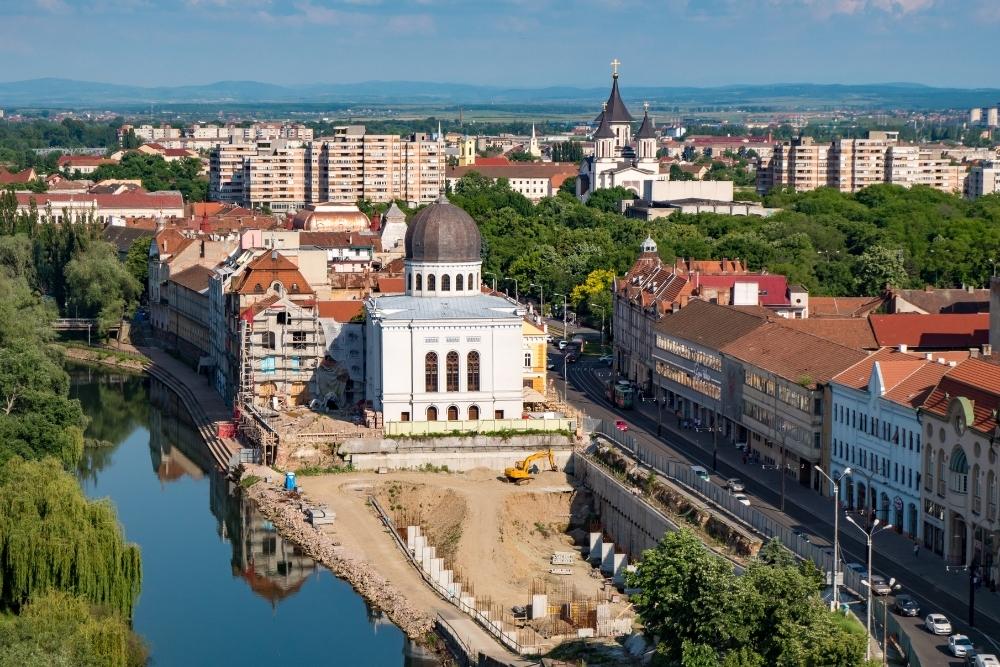
Listed as a Bihor county historical monument since 2015, the Neolog Sion Synagogue is a Jewish place of worship built on the banks of the Crișul Repede, in 1877-1878, in neo-Moorish style with an Italian Renaissance appearance. The synagogue can accommodate up to a thousand worshippers.
The Neologs are the Reform Jews of Oradea who, in the latter part of the 19th century, separated from the Orthodox Jews and decided to erect a building to symbolize the emancipation and liberalism of their movement. The synagogue was built by the established Oradea architect Rimanóczi Kálmán Sr. and designed by the chief engineer Dávid Busch.
Address: 22 Independence Street
Mushroom Hill
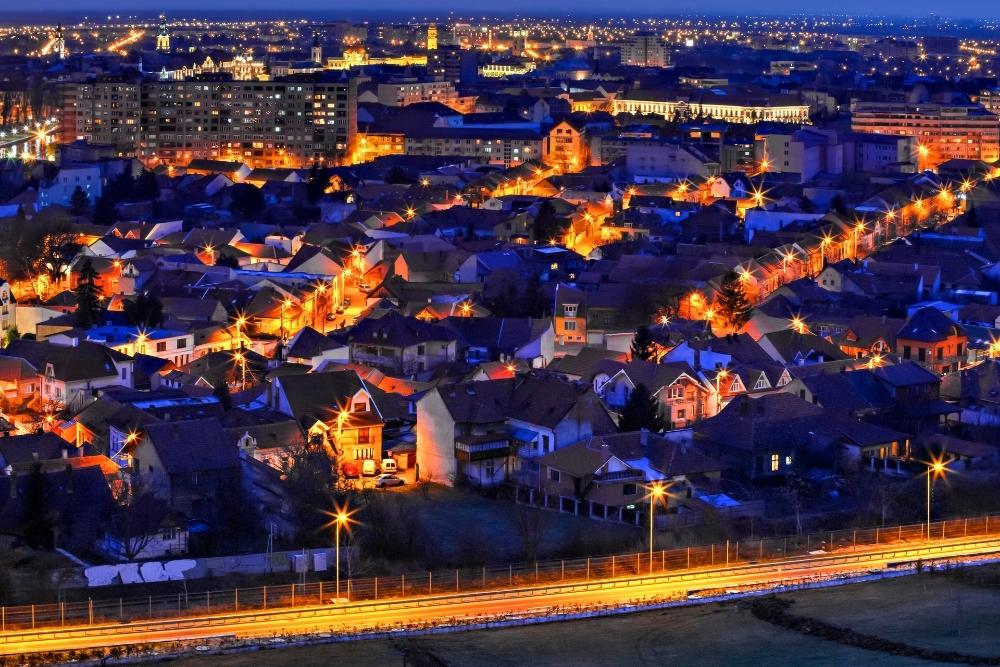
Ciuperca Hill is where locals and tourists alike can enjoy the superb views of Oradea, sometimes accompanied by sunrises and sunsets. It is, however, a rather “troublesome” hill, willing to take a tumble when you expect less, the last such “feat” taking place in early 2022 when some 700 sq m went into a sudden landslide due to the hill being strewn with springs.
The City Hall rehabilitated the Mushroom Hill in 2016 when structural, installation, and landscaping work was carried out. It was then largely destroyed by a landslide.
It is certain that the hill still attracts like a magnet, with the eponymous restaurant at its summit being all the more reason to target it as a weekend destination or for warm (and romantic) summer evenings when the city lights below inspire storytelling and chats. Mushroom Hill can be reached by walking up from Park I. C. Brătianu Park.
Calea Republicii street
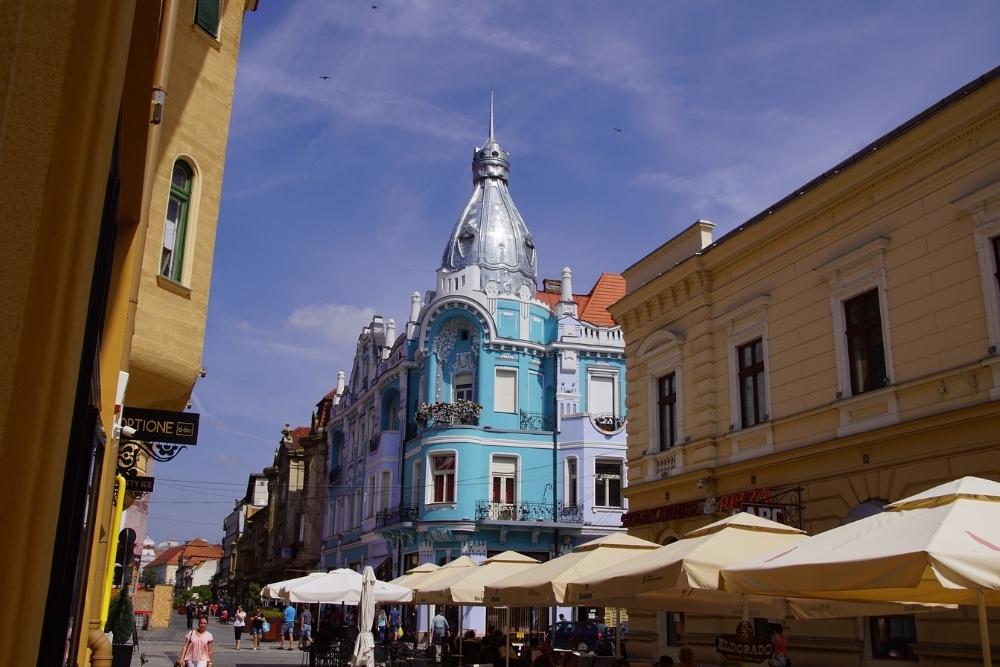
Whether it was called Nagy utca (1727), Fő utca (1890), Rakoczi út (1900) or King Ferdinand (1920), Calea Republicii (its name since 1945) was and is the main artery of Oradea, connecting the railway station to the city center.
Transformed into a pedestrian street, Calea Republicii is where you can best take the pulse of the city, from admiring the secession-style palaces (Rimanóczy Kálmán-senior, Stern, Apollo, Moskovits Miksa) to relaxing on one of the many terraces after an intense shopping session. It’s 600 meters that imbue your spirit with the beauty and soul of a European city that strives (and succeeds) every day to raise urbanist standards to a higher level.
The Crișul Repede river bank
A city lucky enough to have a river running through it must reap all the ‘benefits’ of its natural setting. And an intelligent administration knows how to take advantage of this, turning the banks of the flowing water into a source of joy for locals and tourists. This is the case of the Crișul Repede, whose left bank, between the Ladislau Bridge and the Centenary Bridge, has been turned into a beautiful promenade that blends in perfectly with the surrounding historic buildings.
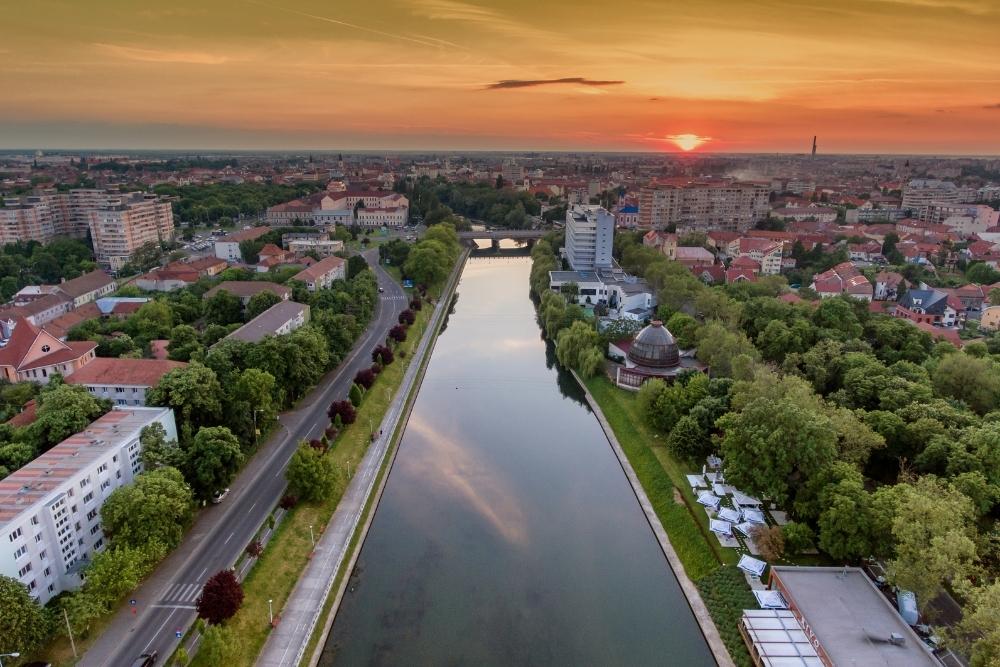
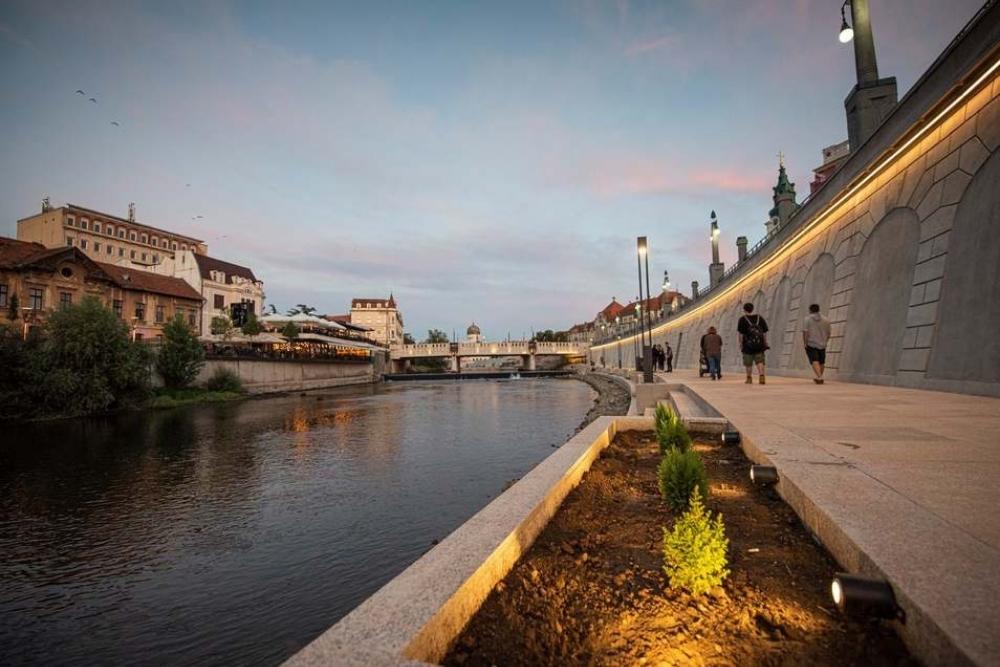
A 13.3 million lei project included restoring the wall and handrail, lighting poles, paving the pavement, installing ambient LEDs, etc.
But when we mention the Crișul Repede, we should not only refer to this promenade. The banks of the river have been landscaped over much longer distances – they have been sanitized, planters have been placed, restaurants and cafes have sprung up, a hotel and an aquapark – so that the Crișul Repede river promenade has become a real relaxation area that on beautiful summer days delights its visitors with the cultural and sporting events that are organized around it.
Art Nouveau Museum – Darvas La Roche House
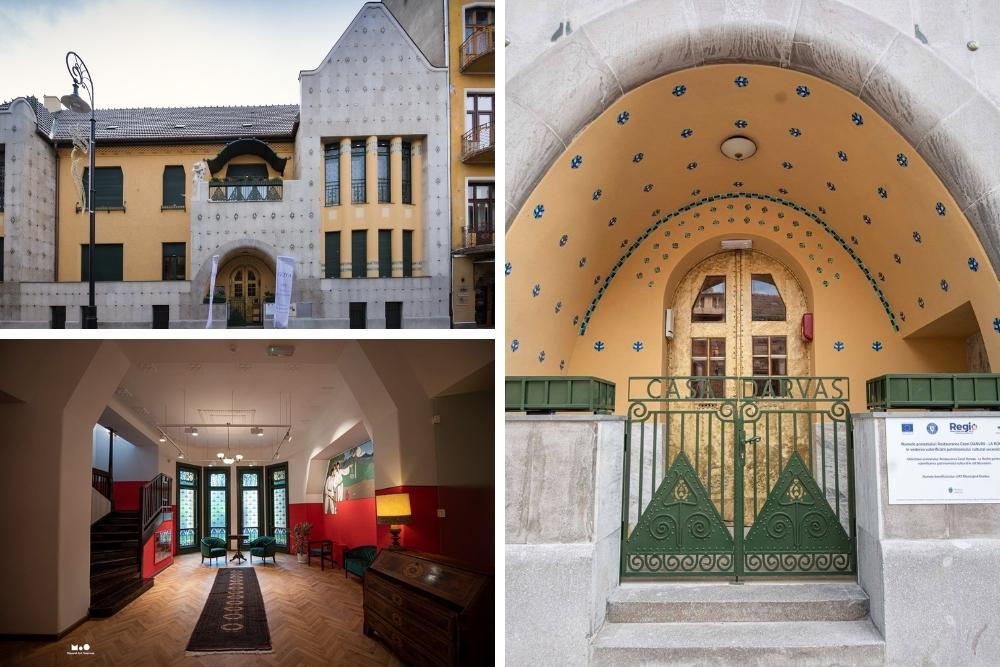
The Darvas La Roche House is one of the most brilliant examples of Art Nouveau architecture in Oradea. Built in the Viennese Secession style, the building was designed by the brothers Vágó József and Vágó László and raised by a Jewish businessman – Darvas Imre, together with his Swiss partner, in two stages between 1909 and 1912.
It served as the company headquarters of the two businessmen, after which it was sold to the Simons, a Jewish family who suffered deportation to Nazi camps. Judita Simon, a journalist, and descendant of this family, lived in the house after the Second World War, then sold it to the town hall, which put it on the touristic circuit.
In August 2020, the Art Nouveau Museum was inaugurated inside the Darvas La Roche House. Temporary exhibitions are held on the ground floor, and the upstairs rooms house the museum’s collections and the Simon family’s personal belongings. The rooms are decorated exactly as they were at the beginning of the 20th century, with furniture recreated and refurbished. The only original furniture that has “survived” the times is the one in the bedroom.
In addition to the bedroom, you can visit the gentlemen’s lounge, ladies’ lounge, dining room, children’s room, kitchen, bathroom, maid’s room, the building overflowing with Art Nouveau elements (very popular between 1890 and 1910), which drew its inspiration from the sinuous natural shapes of flowers and plants.
Speaking of Art Nouveau, it’s worth noting that in February 2022, Oradea was named the most beautiful Art Nouveau destination in Europe by the European Best Destinations publication, taking the lead over such ‘established’ Art Nouveau cities like Budapest, Vienna, and Barcelona.
Address: 11 Iosif Vulcan Street
Nymphaea Aquapark
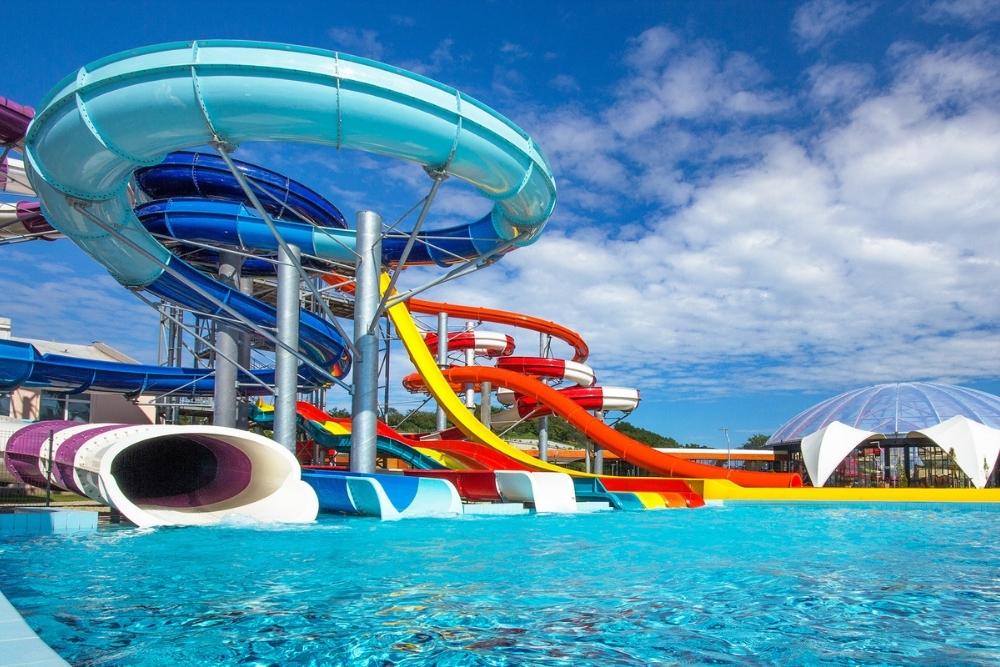
After slaloming through the city’s architectural gems, we’ve chosen to include a family entertainment venue in this top 10 of the most beautiful tourist attractions in Oradea. The Nymphaea Aquapark entered the local landscape in 2016 on the site of the former municipal swimming pool. It covers an area of 7 hectares and 5,000 square meters of water, with an initial investment of almost 22 million euros.
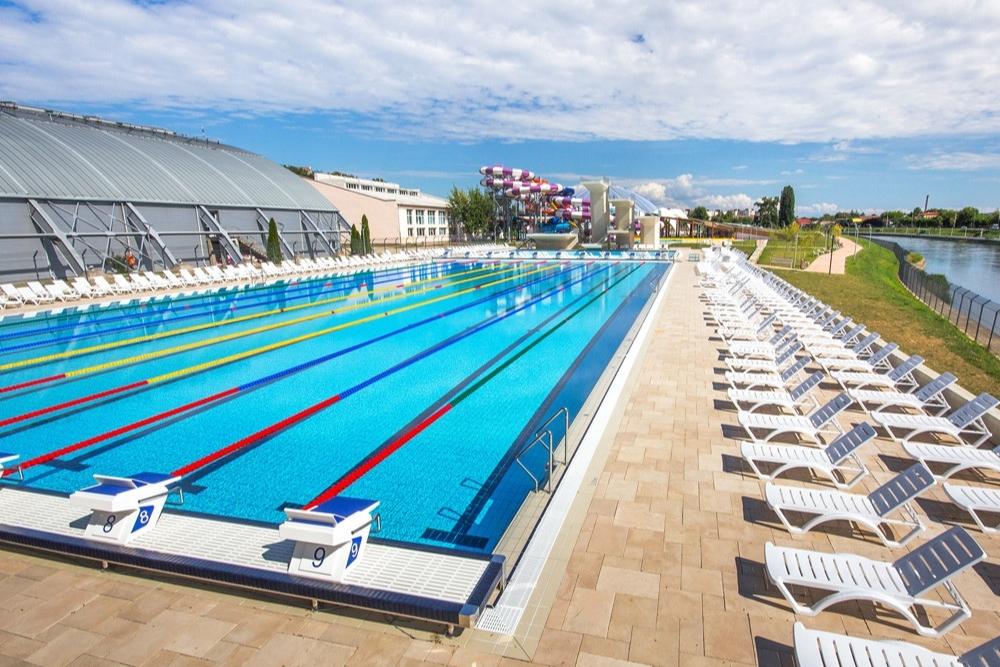
Eight indoor pools, seven outdoor pools (one of Olympic size), 12 slides, recreational areas, sports fields, wellness area (with cosmetic cabinets, massage parlors, various treatments, six types of sauna, Turkish bath, jacuzzi, etc.) – these are some of the main attractions of Nymphaea aquapark. In 2022, an adult admission ticket price started at 35 lei (for three hours).
Address: Aleea Ștrandului 4B
Best hotels in Oradea
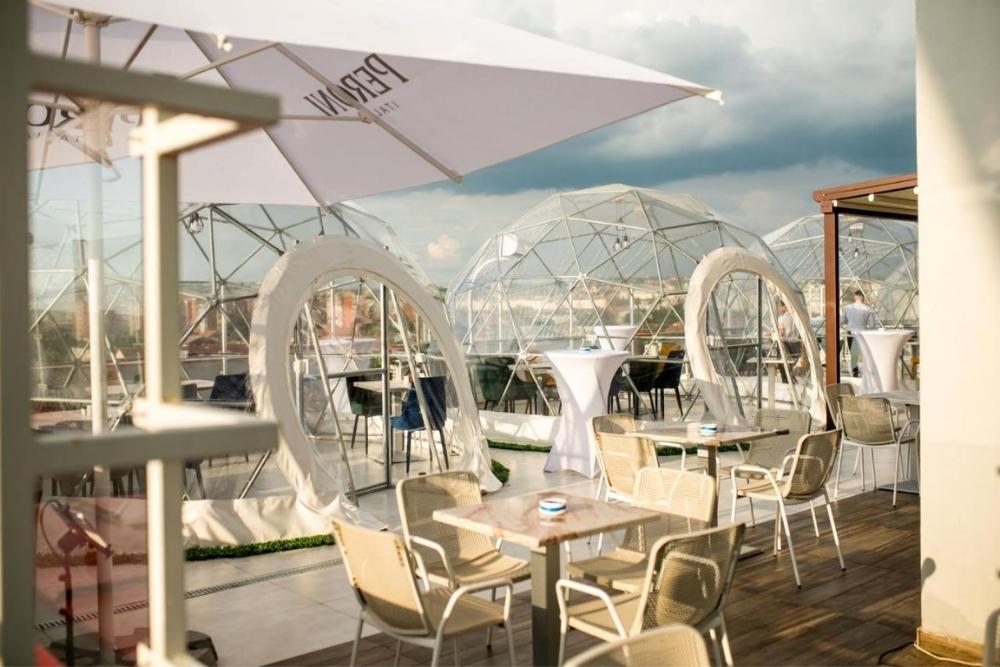
If you’re planning a stay in Oradea to visit the city, or are about to arrive on a business trip, we’ve selected some of the best four- and three-star hotels that have a minimum rating of 8.5 on booking.com (at the time of writing):
Four stars
Ramada by Wyndham ****
Located a two-minute drive from the historic center, it includes an excellent spa with panoramic views of the city.
DoubleTree by Hilton ****
Located on the banks of the Criș Repede River, 5 minutes from the center, it features an indoor pool, spa, and wellness center. The Laurus restaurant serves Mediterranean cuisine.
Hotel Nevis Wellness & SPA ****
The hotel is a 3-minute drive from the center, has a spa with an indoor pool, and the restaurant offers traditional and international cuisine.
Hotel Maxim ****
Newly built in the city center, near the old town center, Maxim has a swimming pool open in summer and covered in winter, with access to a spa.
Three stars
Hotel Impero ***
Affordably located on Dacia Boulevard, Hotel Impero offers free access to its fitness center.
Aparthotel ARIA Prestige Boutique ***
Located 2.2 km from the Oradea Fortress, Aparthotel ARIA Prestige features a terrace and garden, and the interiors are modern and clean.
Caro Boutique Hotel ***
The hotel is located in a renovated historic building in the city center, about 500 meters from the Fortress. Rooms are individually decorated, access to sauna, fitness, and massage is granted.
Hotel Novotheos ***
The hotel is located in the city center, 500 meters from the Central Railway Station and 100 meters from the pedestrian area. The rooms are excellently equipped, and guests can also relax on the outdoor terrace.
Best restaurants in Oradea
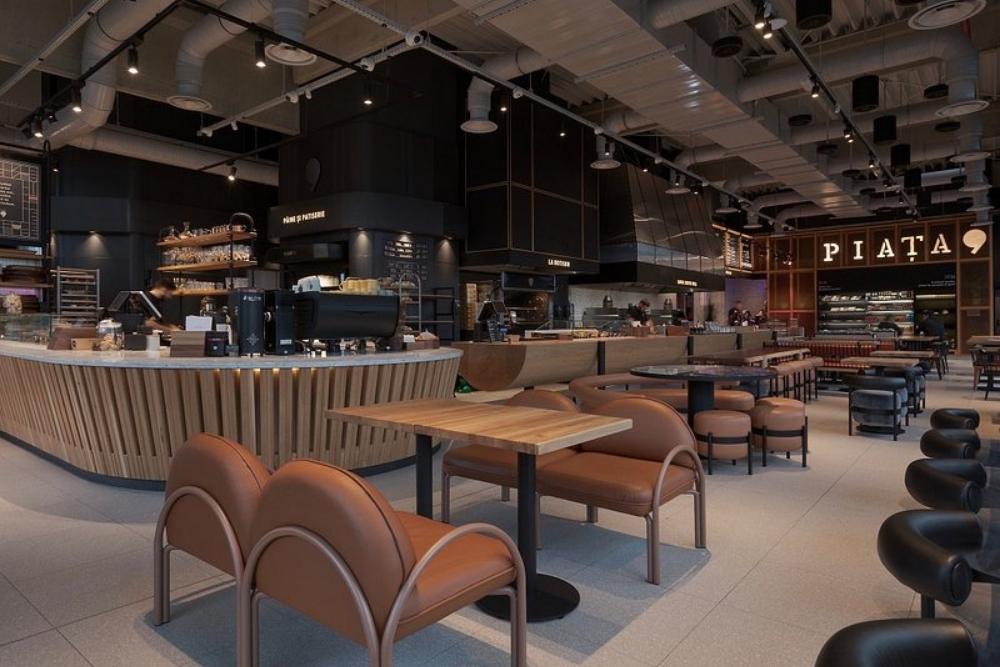
You visit the city enjoy its Art Nouveau beauties, but at some point, you get hungry. Where do you eat? We’ve selected the top five restaurants in Oradea, according to TripAdvisor (as of February 2022):
Piața9 – Restaurant and butcher’s shop. Reinterprets the idea of the food hall and transposes it into the Art Nouveau urban landscape. Address. 16A Decebal Blvd.
Via29 – Nominated every year in the Gault & Millau guide as one of the best restaurants in Romania. Address: 29 Mihai Eminescu Street.
Steak HUB – Visitors say with their hands on their hearts that here you eat the best beef steak in town. Address: Calea Aradului Street, Hotel Ramada
Graf Restaurant & Pizzeria – A cozy atmosphere and a feeling of “home”, unique pairings on the culinary menu. Address: 3 Barbu Ștefănescu Delavrancea Street
Rivo Restaurant & Lounge – A menu for all types of guests, made with the idea that they will come back to enjoy the dishes. Address: Aleea Ștrandului 3A
You may also like: What to see in Sighisoara, the most beautiful Romanian medieval town
